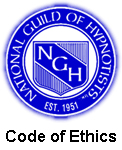
by Charles Curtis
If you have ever worked with a student of metaphysics who is having trouble achieving a goal, you may have heard the person describe a conflict over how much detail to get into when specifying the goal.
This is because some metaphysical systems go to one extreme, by suggesting that you specify a goal in as much detail as possible, such as a desired car’s make, model, color, and accessories, and warn that if you don’t get into that level of detail, nothing will happen or you’ll get something you don’t want.
Other metaphysical systems go to the other extreme and strongly suggest that you stick totally to very general goals, such as feeling “satisfied”, and let “the universe” figure out the details, otherwise nothing will happen or you’ll get something you don’t want.
So the earnest student of metaphysics can get him or herself into quite a quandary, trying to figure out how much detail to use. That is to say, should the student focus on “satisfying transportation”, “a new red car”, or “a 2006 scarlet-red Honda Civic with moon-roof and fog lights?”
This is relevant to the NLP practitioner, because this is really the problem of all clients who are having trouble achieving their goals (which is to say, all clients, because your client is coming to you because of having trouble achieving a goal).
In NLP, the “level of detail” is called “chunk size”. So when you have a client who is having trouble with a goal (which is to say, every client), you have to examine the chunk and see if it is a “well-formed goal”, and as part of this, you have to examine the chunk size, that is, its level of detail.
People having trouble with goals pick goals that are either too large or too small. A goal that is too large seems overwhelming, and nothing happens because there are no details that seem to take one towards this overwhelming goal. And so the person grinds to a halt in a confused and frustrated mental state.
In contrast, a goal that is too small means that the client is micromanaging his or her progress, getting all balled up in too many details. And so the person grinds to a halt in a confused and frustrated mental state.
Getting the Technicolor Dream Car
-
The first step in achieving any goal is to get rid of the confusion and frustration through whatever means you are used to using. (If you’re new to this work, try a few minutes of EFT meridian tapping. It will make short work of negative feelings like this.)
-
Assess whether the client’s chunk size is too large or too small. Guide the client through the process of selecting a chunk that is a more appropriate size.
-
The criteria for doing this is to change the “viewing position” any time the level of detail (or level of abstraction if the chunk size is too large) begins to feel bad. So someone with a chunk size too large needs to “take a closer look” anytime the goal specification starts to be so abstract that it feels overwhelming. Someone with a chunk size that is too small needs to “pull back and see the big picture”, accessing less detail anytime the goal specification starts to be so detailed that it feels overwhelming.
-
So if, for example, the person needs a new vehicle and says, “I need to get a car and don’t know where to start”, the client is at a level of abstraction that is too high, and you need to ask questions to pin down more detail, such as “What features will upset you if they’re not there?”
-
On the other hand, if the person says, “I’ve researched vehicles endlessly, and I have this mass of detailed information, and it seems overwhelming, I can’t sort it all out” then ask questions that move the client towards a higher level of abstraction, such as “What features will upset you if they’re not there?”
-
Once you’ve gotten the client to a chunk size that feels comfortable, doable, satisfying, and appropriate (that is, it meets all the criteria for an NLP well-formed goal), then put the person in hypnosis and future-pace him or her (i.e. age-progress the client to a time when this goal is already true), and have him or her experience this vividly, adjusting submodalities to crank up the satisfaction of the experience.
-
You can do this formally, by saying something like “Close your eyes and imagine what it will be like to have this vehicle and be driving it down the road.” Or you can induce trance naturalistically by simply asking, “What do you think it will be like to have this vehicle?” The client will obligingly go into trance for you without asking and begin to construct an image in the dominant representational system (visual, auditory, or kinesthetic) out of the key submodalities (bright or dark, loud or soft, warm or cold, etc.)
-
Follow this up with another naturalistic statement to amplify the dominant representational system, like “What are you looking forward to about this?” (if visual), or “What feels to you like the best part of having this car?” (if kinesthetic), or “What sounds so satisfying to you about having this car?” (if auditory).
-
You could then crank up the key submodalities directly, asking questions such as “Is this picture bright or dark? What would happen if you made it brighter?” However, again, this is most easily done naturalistically, by asking such questions as “And what makes this car absolutely perfect for you?” When you do this, the client automatically selects and implements the best submodalities without needing your help.
-
To motivate the client to achieve this goal, have him or her tell you about the submodalities of another time when a similar goal was achieved. You can do this formally, by asking questions like “Is your motivating picture to the left, middle, or center?” or you can do this naturalistically by asking “And what was your favorite part of getting a new car last time?”. When you do this, the client will tell you about the key submodality, such as “It was that new car smell. I drove around for weeks savoring that special scent, until it finally wore off.” (And, of course, the client has to reexperience that to tell you about it, so the client goes into trance, age regresses to this experience in front of you, accesses the key submodalities, and then describes them to you, all without your having to say a single thing).
-
Then, have this client modify the submodalities of the new Technicolor dream car to so that its sounds, smells, sensations, and sights are in the same position as that other motivating memory. Again, you can do this formally by asking questions about submodalities, “What were the sights, sounds, and smells of getting your last car like?” Or you can do this naturalistically, by saying “What would it take for the process of getting this new car to look/sound/feel (depending on the client’s dominant representational system) as good to you as the process of obtaining your last car?”
-
And the client will then bring up both pictures, automatically select the key submodalities in the old one, and implement those same submodalities in the new one, without your having to say a thing. The client will do this by either closing or not closing his or her eyes, going into an eyes-open or eyes-closed trance, and then modifing the picture/sounds/feelings of obtaining the Technicolor dream car until it has the same submodalities as the old satisfying experience.
-
Amplify this experience. Once again, naturalistic is the easiest approach, as all you have to do is ask “And what makes this absolutely perfect for you?” That will cause him or her to crank up the key submodalities even more, get a BIG smile, and generate a VERY pleasant internal experience.
-
Now fix the goal in time. You can do this naturalistically by saying, “And what’s a realistic time frame for obtaining this car?” Then utilize whatever the client says by saying “What will it be like (a week, a month, whatever) from now when you have (this car)?” Both the trance and smile will deepen, the body language will shift, and the possibility of obtaining the Technicolor dream car will now seem “real” to the client, as it is now installed in the client’s timeline.
-
Now just finish the job by bringing the future goal into present time by asking a present-time question using primary representational system language, “How does life look now that you’ve got your new car?” or “Doesn’t it sound so good to know that this new car is yours?” or “It really feels good to have your new car, doesn’t it?” Once again the client will rev up all the key submodalities and make it come to life, but now as a present-moment experience of anticipation.
-
When you emerge the client after this process, s/he will be excited, motivated, and “raring to go” to go out and make this Technicolor dream car a reality.
Note: The above sequence makes a great group process as well.
When you master this skill of motivating others to achieve their goals, that’s when being a Master Practitioner really starts to be fun!






